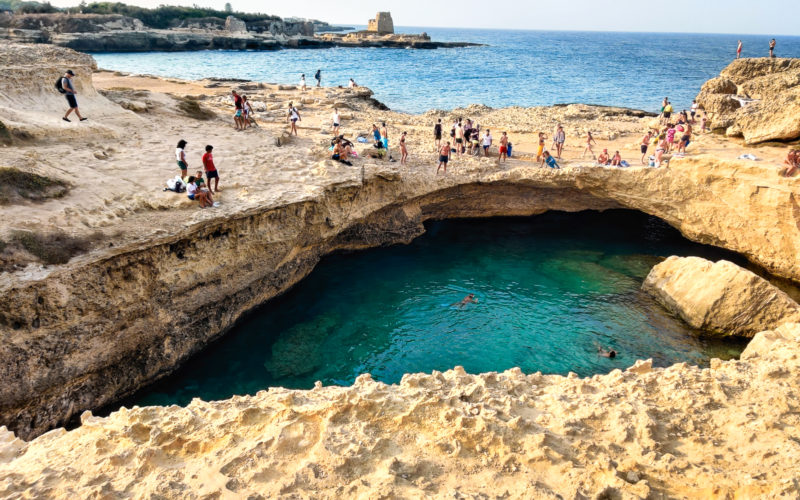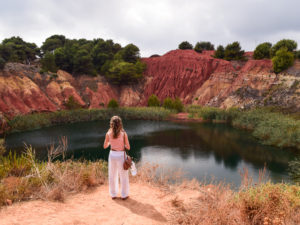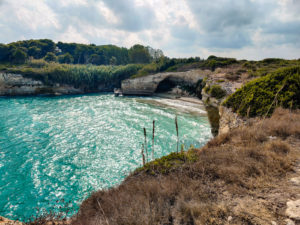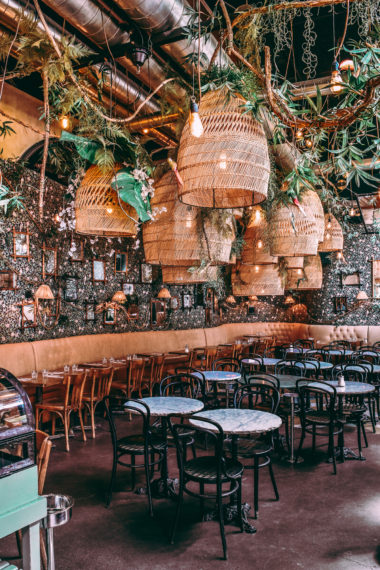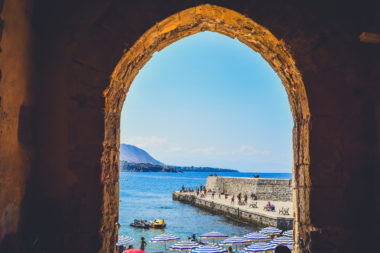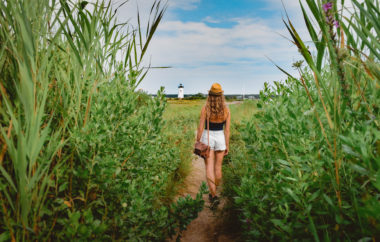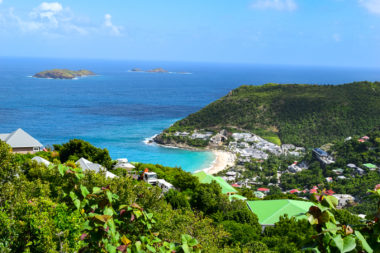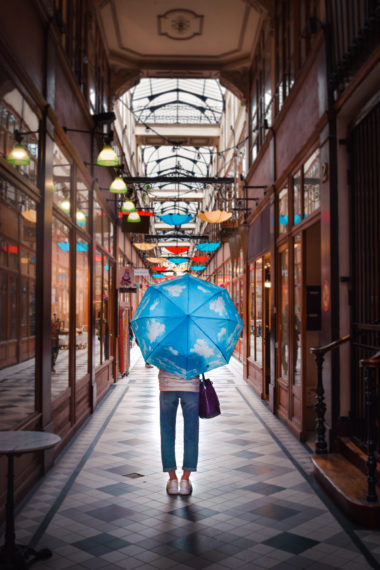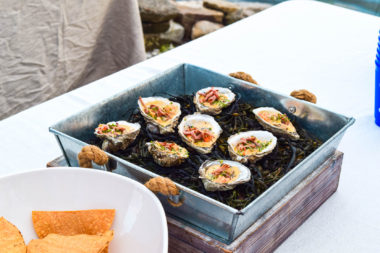The Apulian azure-blue Adriatic Sea is a sight that almost all Italians dream of. It’s the number one reason travelers drive the Salento Coast. Here’s where to stop along the way.
From Otranto, we drove along the Salento East Coast to Lecce. As talked about by all local Italians, it is a beautiful coastal drive. The road branches out onto rock cliffs, coves, and beaches that plunge hundreds of feet into the azure-blue sea. If there is one reason people drive the Salento Coast, it’s for these stunning Adriatic sea views. We started off at Otranto, a seaside village located next to a fiery red rock lake that spills into the sea like lava. Drove by Baia del Mulino D’Acqua and took at dip in Torre di Sant’Andrea and Grotta della Poesia. Our final destination was Lecce. The Salento Coast is a drive that many in Italy dream about, so here’s how to make the most of it and where to stop along the way.
1. Cava di Bauxite
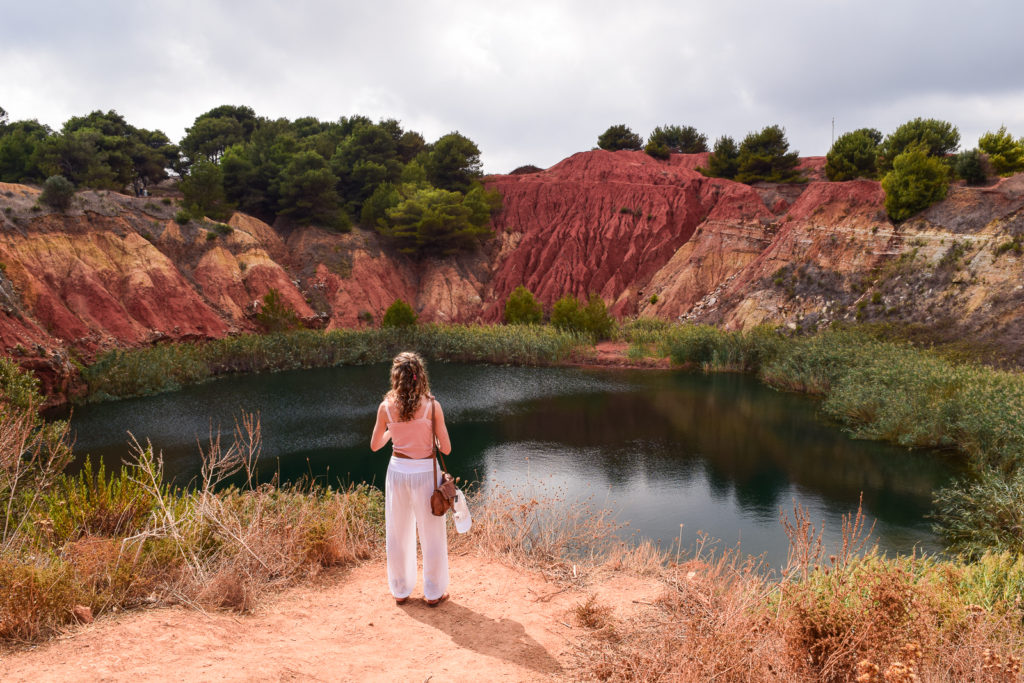
Fiery red rocks contrast next to an emerald green lake surrounded by greenery. Cava di Bauxite has a sad beginning, but a happy accident turned into a natural wonder near Otranto. It’s an old quarry from the mid-1900s that filled with water from a nearby aquifer creating a lake. The minerals from the quarry is what gives the rocks it’s fiery red, orange, and peach color, but it’s also what makes the water in the small lake such a stunning and contrasting emerald green color.
Read The Full Article
2. Otranto
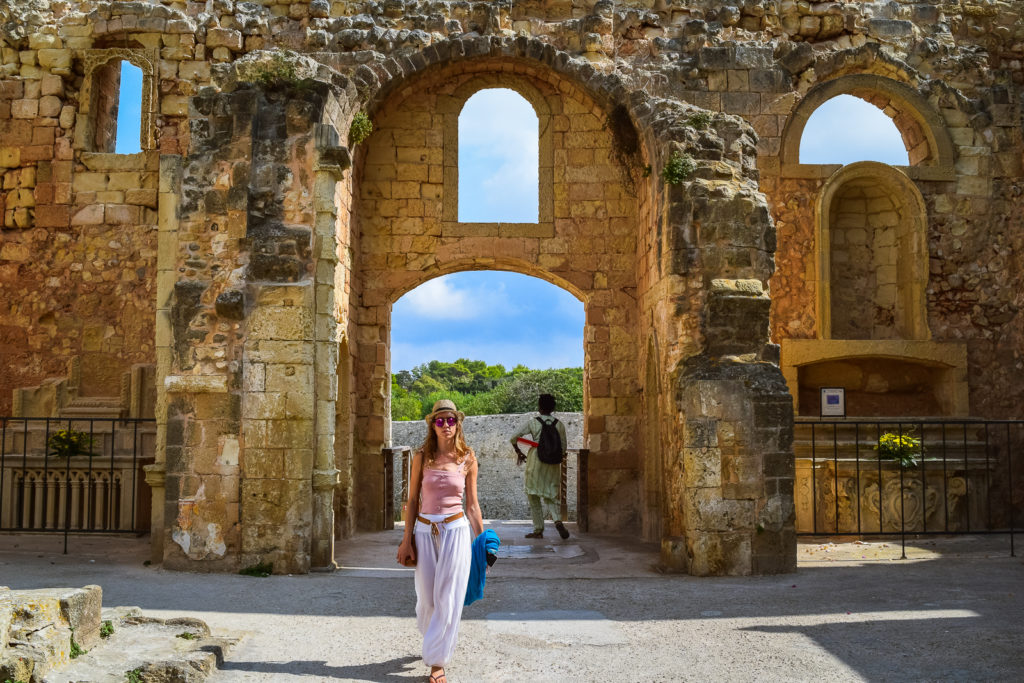
Otranto is a maze of white washed narrow streets and alleys. You’ll want to take your time walking in and out of them while learning the antique history of this Adriatic coastal town. My mother and I stopped here for lunch on our drive down the Salento coast. In the summer months, Otranto can feel a little bit like Mykonos. Packed with tourists elbowing their way through the narrow streets in search of artisanal souvenirs in the local shops. Not to miss is the Castello Aragonese. It’s hard to miss the castle since it wraps around the entire ancient city. Stunning walking paths have been carved around it making for the perfect walk at sunset.
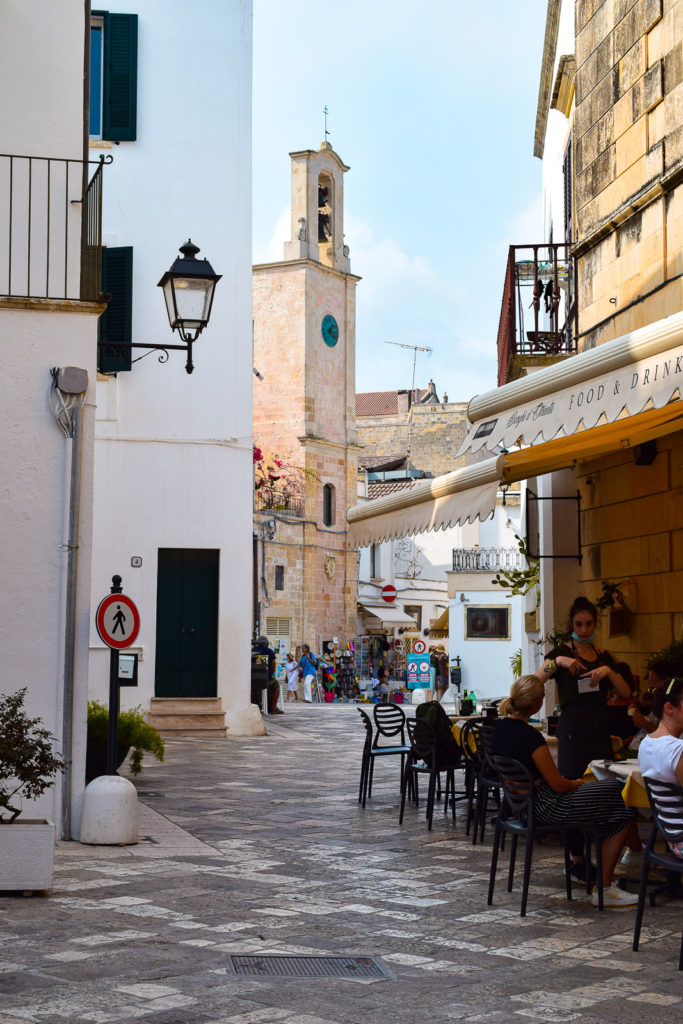
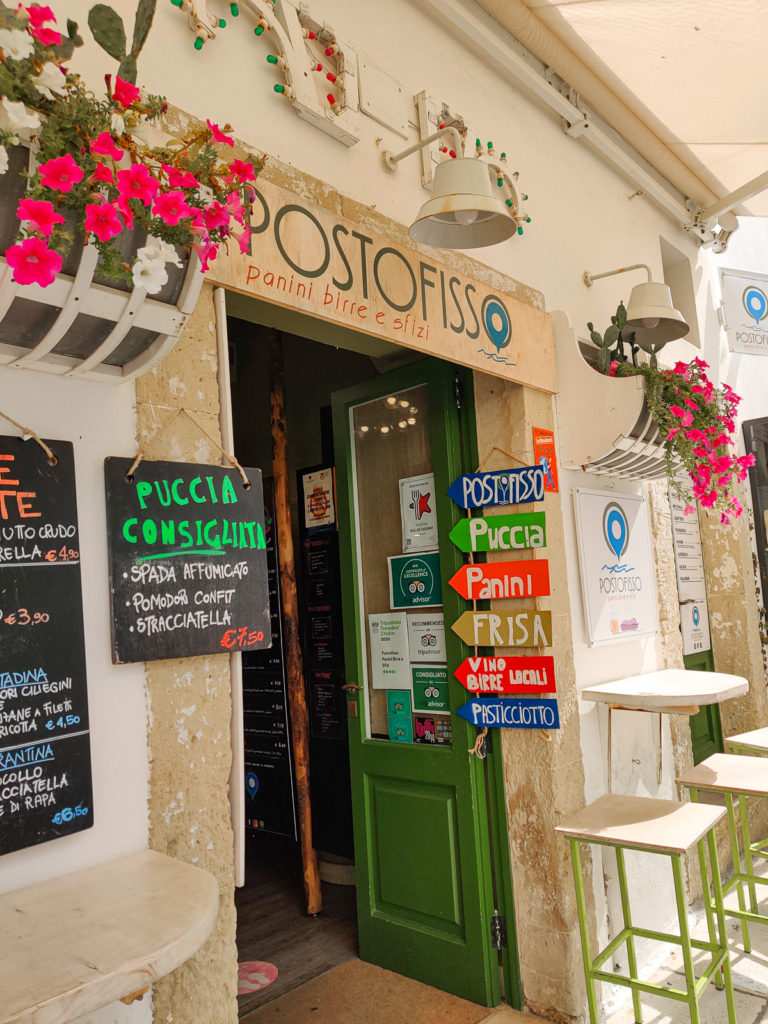
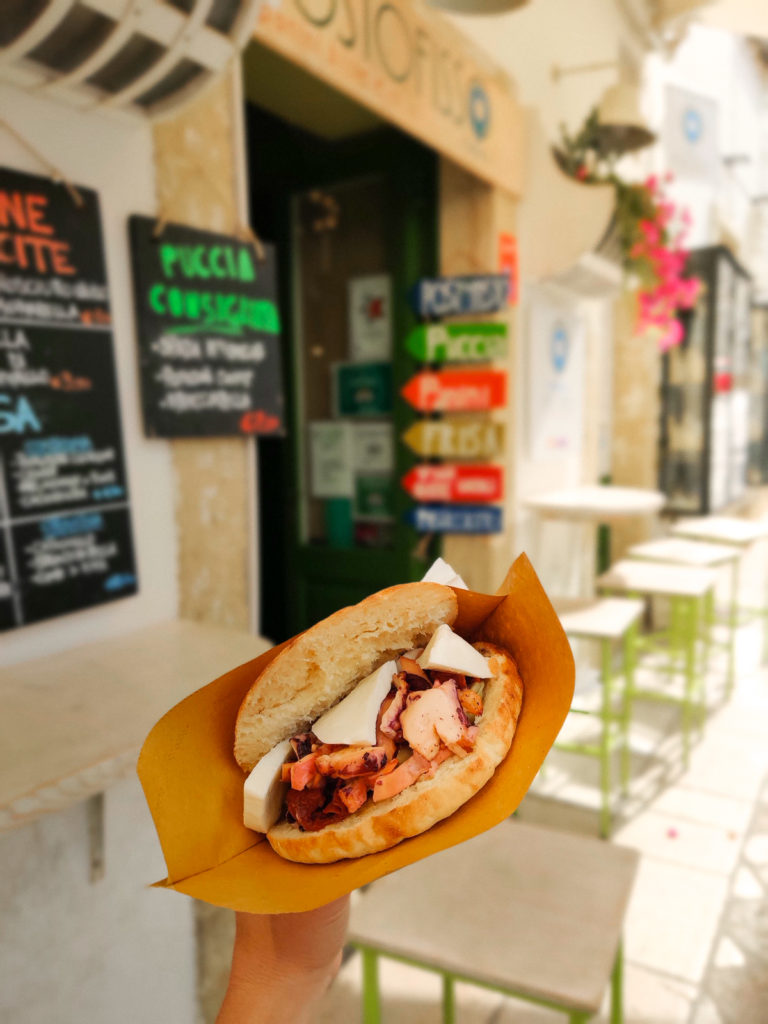
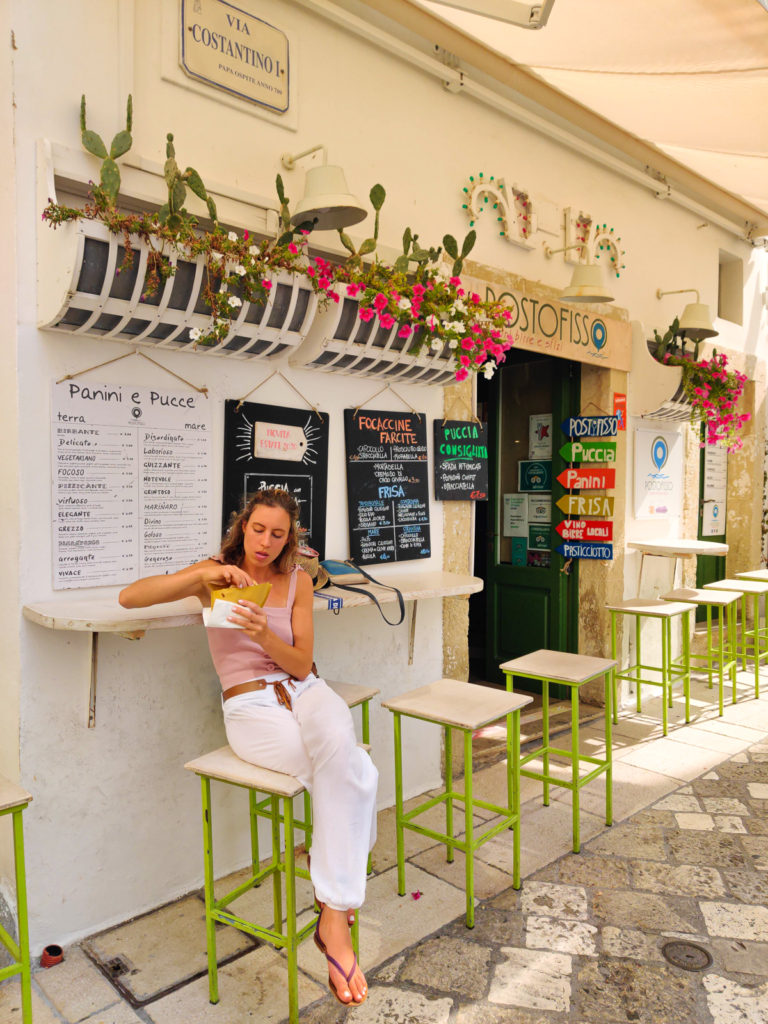
If it’s traditional Apulian food you’re looking for, look no further than Posto Fisso, which in English translates to Fixed Place. On my bucket list of traditional Apulian foods to eat was the Apulian street food Puccia. Puccia used to be eaten by workers who would go out into the countryside for work. It is a local Salentino bread made in a wood fire oven. Puccia tastes like a pizza bread that is empty on the inside making it a perfect sandwich to pack with whatever ingredients you’d like. Being on the coast, I ordered a Puccia with octopus, chicory, dried tomato, and mozzarella. Out of all the Apulian delicacies I had on my trip, it was up there in terms of street food. I preferred it to the Frisa I had in Gallipoli, but it in no way beat the pasticiotto, caffe leccese, and panzerotto — sorry Puccia!
3. Hike to Mulino D’Acqua
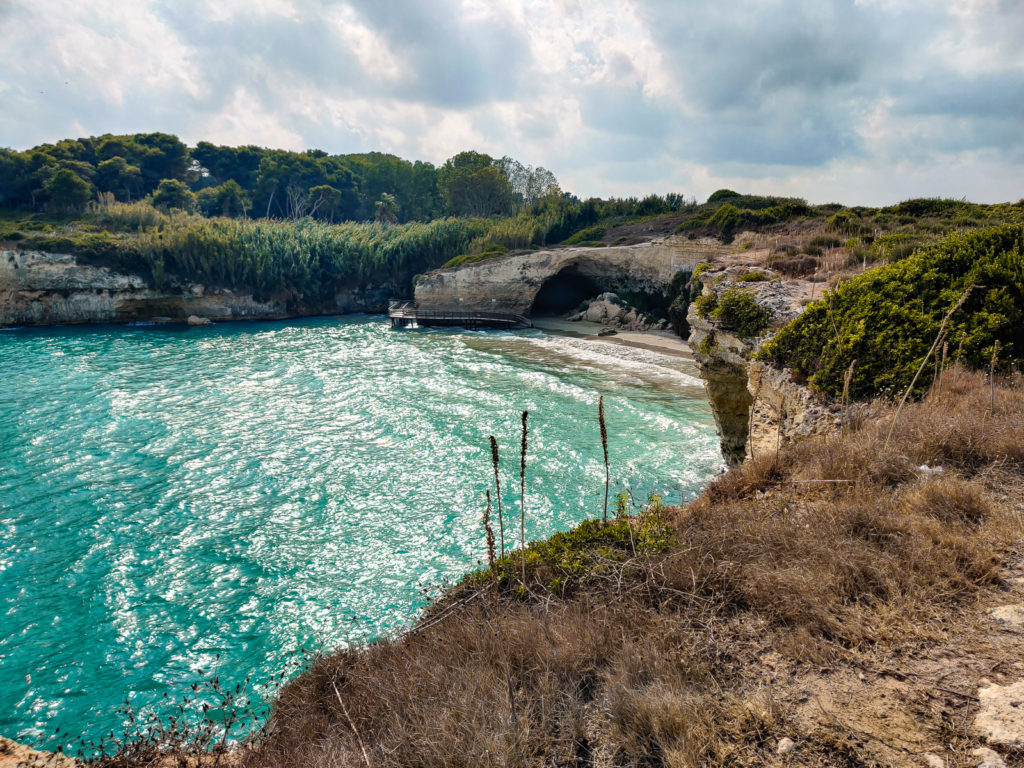
You’ve probably never heard of the Baia del Mulino D’Acqua, which translates to Water Mill Bay, located near Otranto. This “beach” located near Otranto is very much a local kept secret. It’s not as known as it’s neighboring bays of Baia dei Turchi and Torre di Sant’Andrea. Why? Maybe it’s because it requires a bit of a hike to get there and a swim to make it out to the heavenly grottos. But once there, you’ll find yourself away from the crowds that have rushed to the other more well-known bays and have this slice of paradise all to yourself. To learn how to get there, read the below article.
Read The Full Article
4. Torre di Sant’Andrea
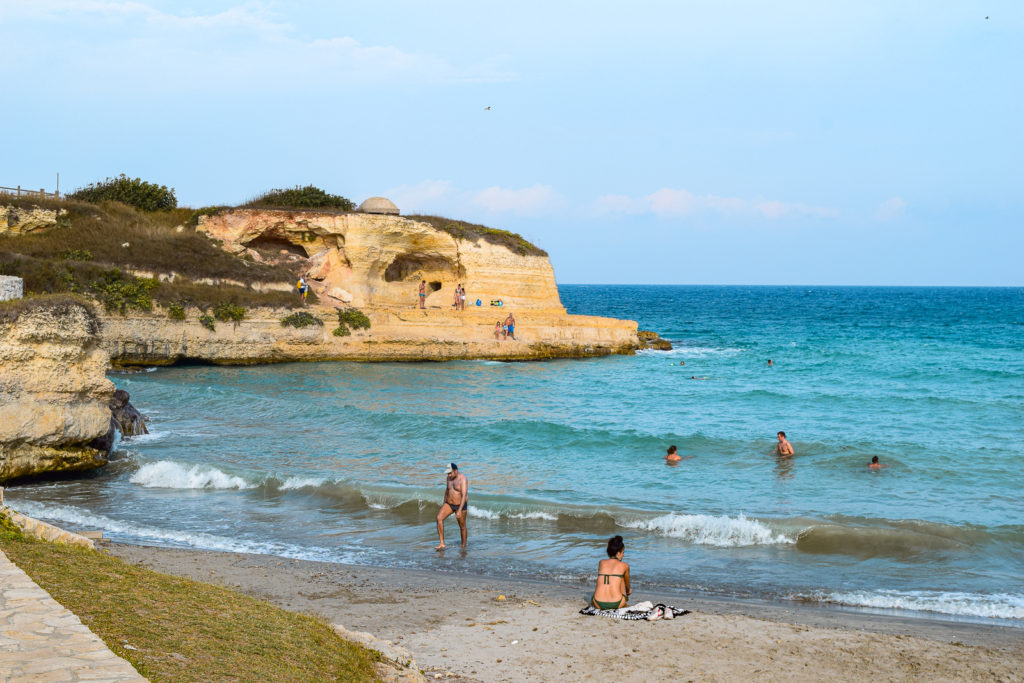
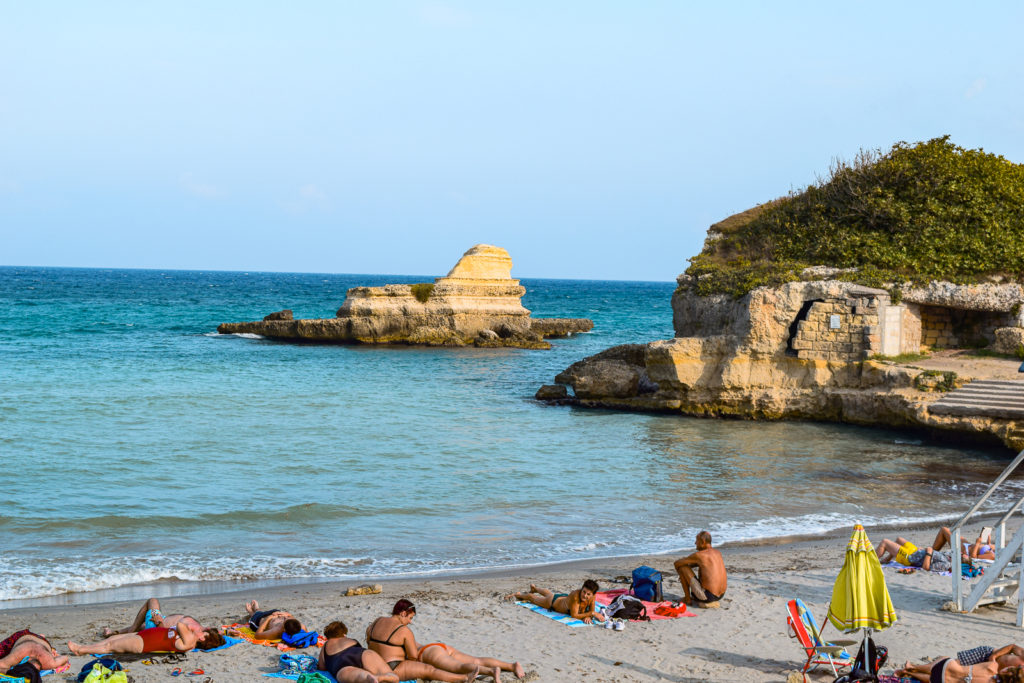
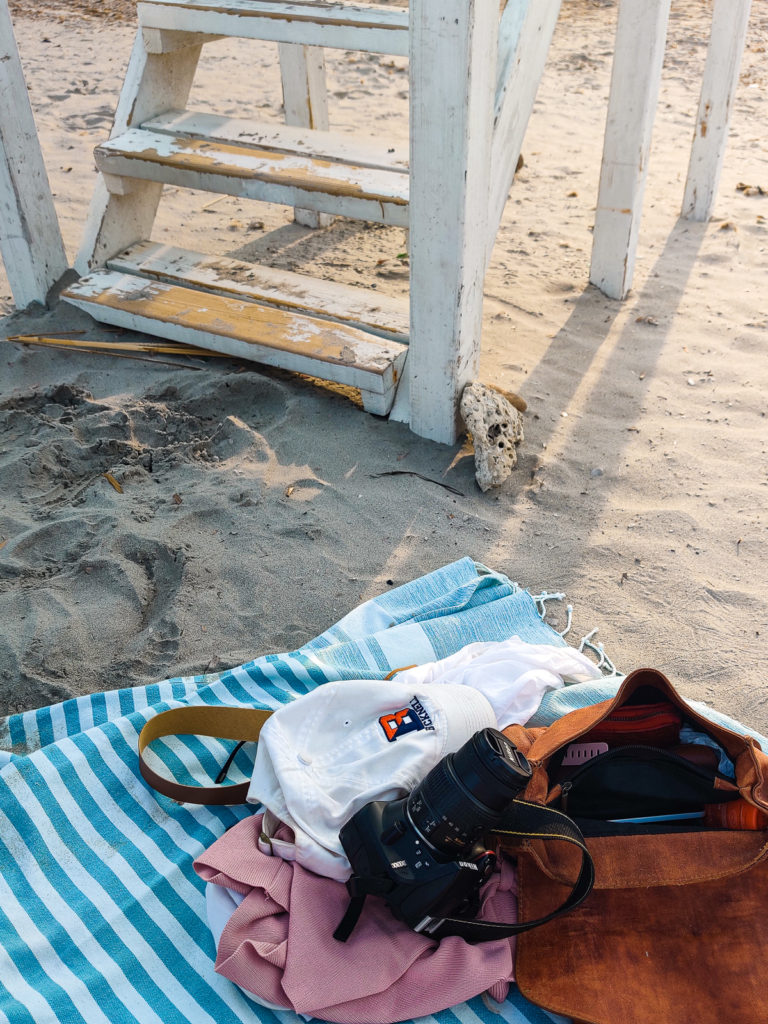
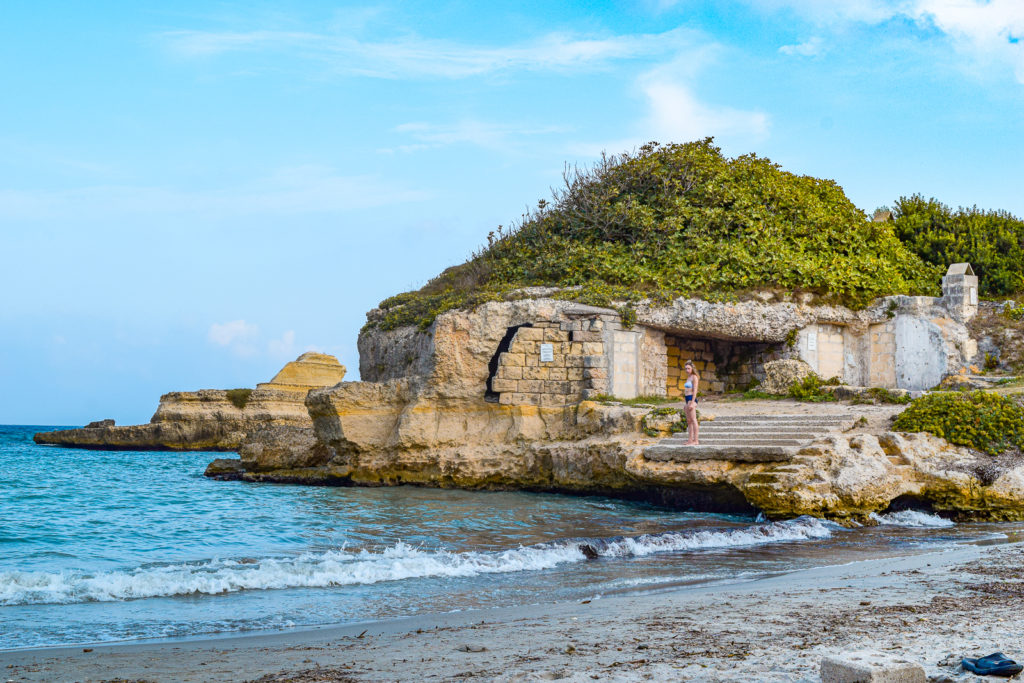
Just a couple of miles north of Baia dell Mulino D’Acqua is Torre di Sant’Andrea. Now, don’t make the same mistake I made…Google Maps will tell you that Torre di Sant’Andrea is the bay pictured above with the two faraglioni in the middle called Le Due Sorelle. A few days later, I stumbled across the below image and realized we had not reached our final destination. Like many things in Italy, again, it was not clearly labeled! Apparently, we had stopped at the beach of Sant’Andrea. To the right of the beach was a pedestrian walkway along the cliffs that led to Scoglio dello Mbruficu, Spiaggia della Punticeddha and Grotta di Mafar.
To the left of the beach past the lighthouse were Grotta del Pepe and the Torre and Faraglioni di Sant’Andrea.
5. Grotta della Poesia
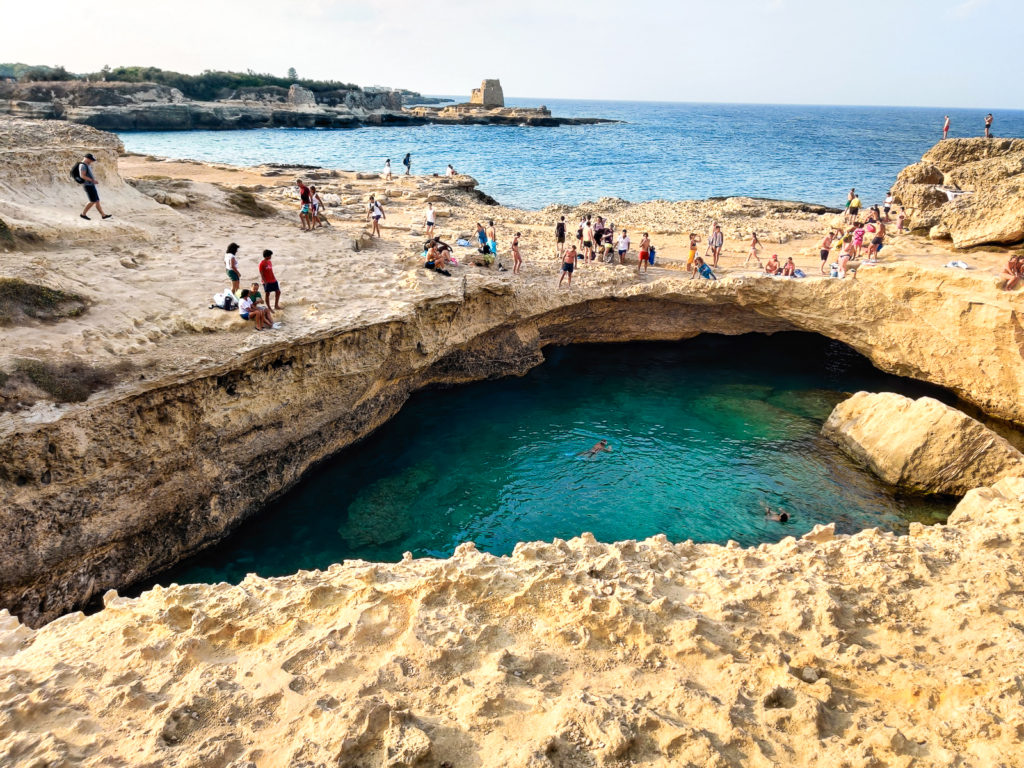
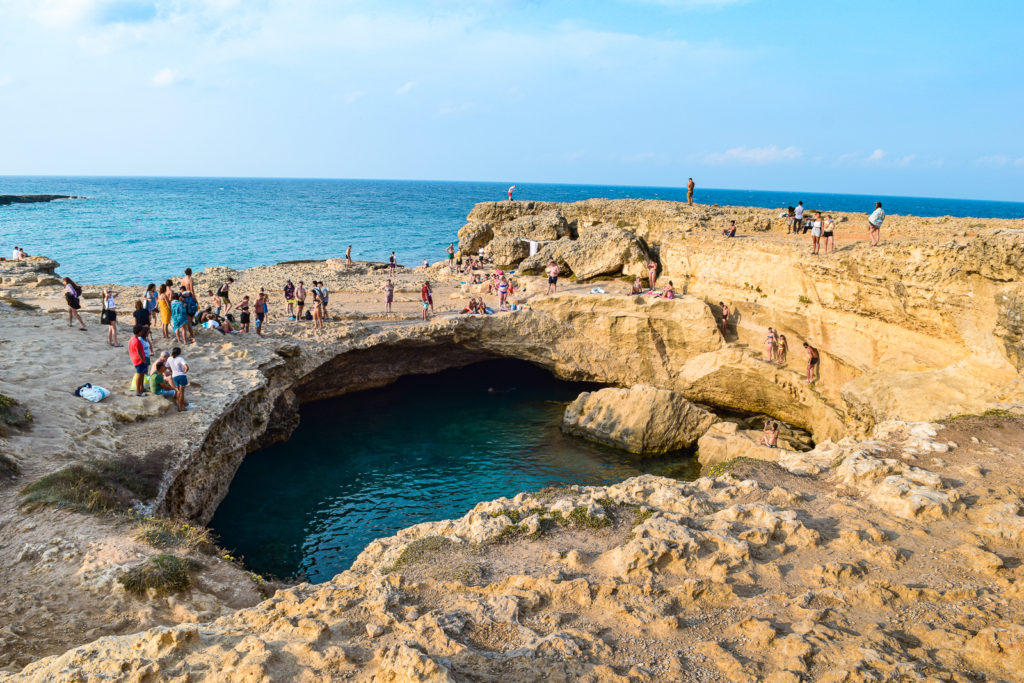
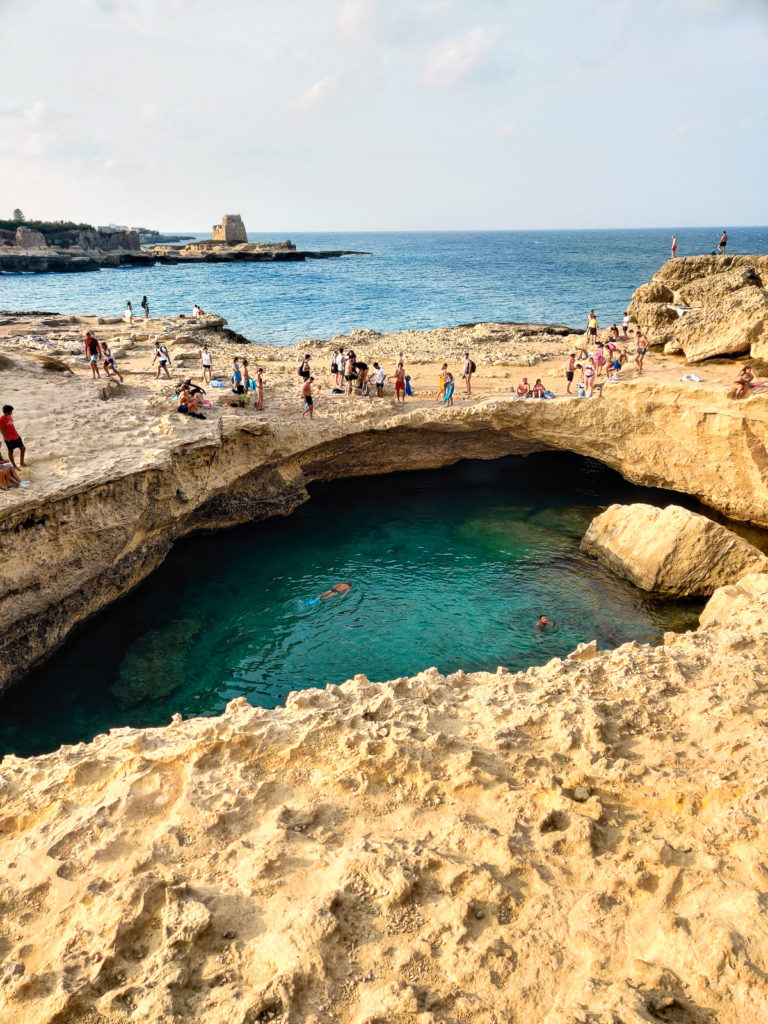
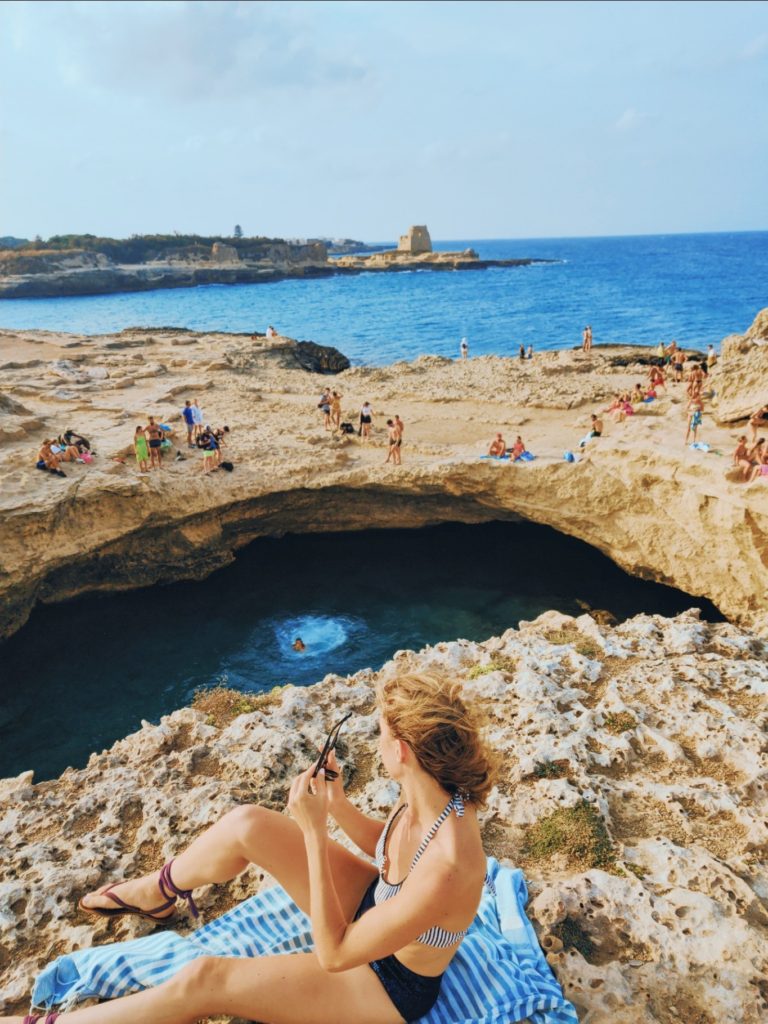
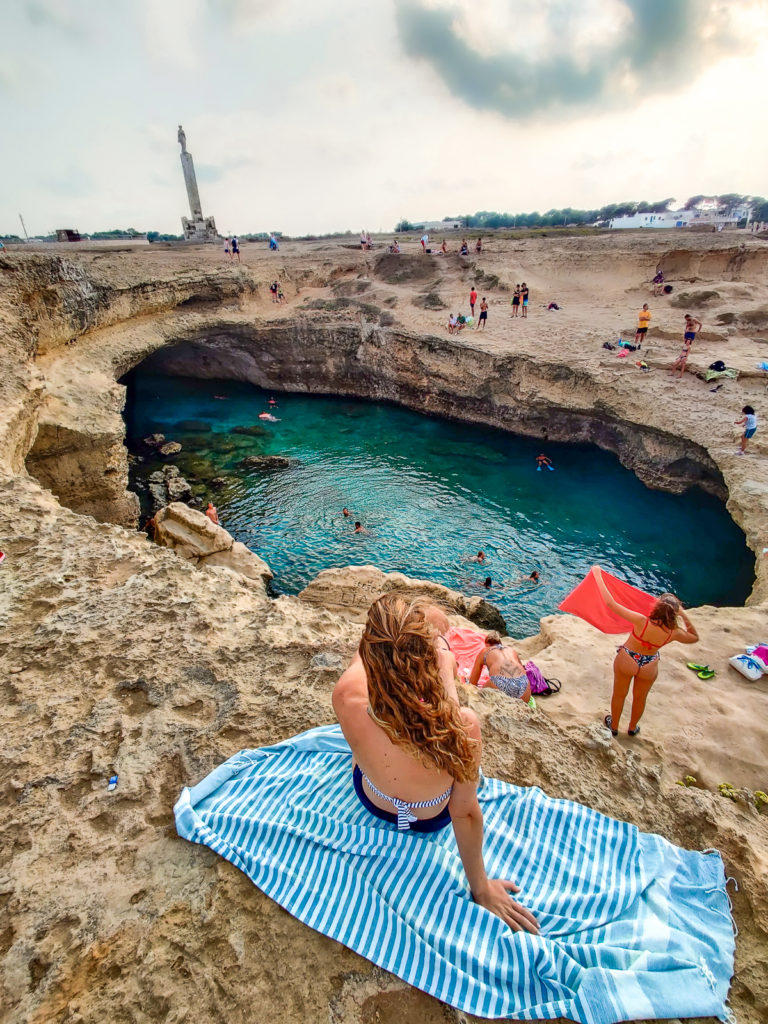
Our final destination was Grotta della Poesia, or poetry cave, just 30 minutes from Lecce. The cave got its name from an old tale. A princess loved to swim in the clear water so poets would come and dedicate poems to her. While this is a lovely tale…the more realistic story behind it is that the word Poesia comes from the Greek work Posia, which means water source. People crowd around the natural swimming pool and dive into it. The jump is about 5 meters, or 15 feet, which is pretty high. Getting out can be a bit rough so I recommend you bring water shoes. Always be careful when jumping into the cave as there have been accidents in the past.
>> Next: 7 Things To Do In Lecce, Italy: A Lesser Known Travel Guide
Follow SVADORE on:
